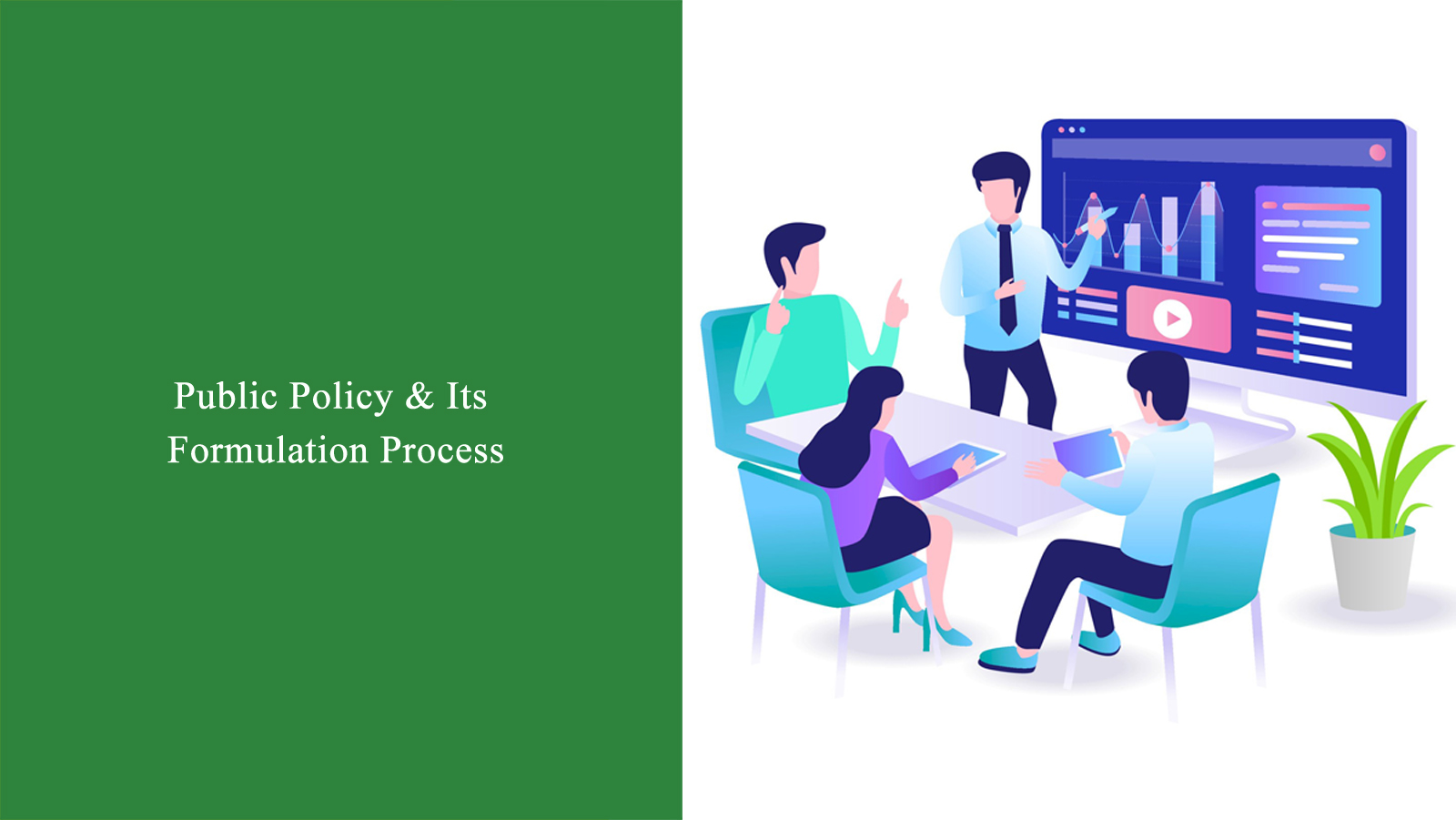An Overview of Public Policy & its Formulation Process
Do you want to know about public policy and its formulation process?
This article covers detailed information about public policy, its formulation process, importance, types, and problems.
What is Public Policy?
The public is an ordinary people or citizen whereas policy is a plan of the organization. Policy is a purposive and consistent course of action that is formulated by a specific political process.
It can be rules, regulations, principles, laws, or directions that guide our actions. Planning itself is also a policy.
Policy answers the questions related to our actions like what is to be done, how it is to be done, and who is to do it, etc. All of the organizations, agencies, workplaces, Schools, and even families make policies.
The policy is dynamic, repetitive, and also evidence-based. It varies from law or rules. The bases of public policy are equity, efficiency, liberty, security, and welfare.
The goal and objective of policy must be specific, measurable, achievable, realistic, as well as time-bound (SMART).
Policymaking is one of the important functions of the government. The representative government needs sound policies. In public policy-making processes, policy communities also play a crucial role.
Public policies are made to regulate industry, to ensure security, to achieve a particular purpose, and to promote public goals. Public policy also helps to solve societal problems.
The effective implementation of government policies helps to strengthen democracy. For healthy democratic practice, policymakers should be open to advice and comments.
Policies should be suitable to the country’s context-specific needs. Those policies can fail if they do not address the correct problems. So, the presence of a research community and think tanks is necessary in the policy-making process.
Policies guide Decision-making. Effective policies can boost economic growth and improve social equality and justice. Whereas, poorly formulated policies can have a negative impact like eroding public trust. So, the government should make a good policy.
The changing of the top-down policy process into the bottom-up approach ensures multi-dimensional participation. It helps to create the ownership of stakeholders in related policy while ensuring sustainability and productivity.
Opinions of the concerned stakeholders should be included in the policy-making process. Sufficient technical support and good leadership are necessary for policy making. At the same time, experts’ suggestions, opinion, and recommendations are needed.
Nature of Public Policy:
- Evidence-based
- Purposive or goal-oriented
- Innovative
- Futuristic
- Multi-sectoral
- Dynamic
- Emphasizes cause and effect
Types of Public Policy:
In the society, different types of public policies are formed and applied. Policies depend upon context, actor, and problem.
The government uses two types of policies to influence economies i.e. fiscal policy which determines the taxing as well as spending and monetary policy, which uses the control of interest rates and money supply.
Likewise, there are many types of policies including distributive policies, regulatory policies, constituent policies, and redistributive policies.
The main purpose of distributive policies is to provide services to a targeted group and regulatory policies are to control the behaviour and practices of individuals and organizations.
Similarly, constituent policies aim to address public issues, and redistributive policies aims to transfer benefits or resources from privileged group to the less advantaged.
Functions of Public Policy:
- Policies guide the actions.
- It sets both rules and regulations.
- State an objective to do something
- Encourages transparency
- Helps in decision-making.
- The policy also enables the government to address critical issues of the society.
- Helps to stimulate the growth and development of a country.
- Conducts the activities of the government for creating welfare for the people.
Policy Formulation:
The process by which governments as well as organizations make policies is policy formulation. It involves the process of determining and crafting a set of policy alternatives to tackle a problem.
Effective policy formulation helps to address economic and social problems by achieving the targeted goals.
To make the policy formulation process more efficient, it needs accurate data, the participation of stakeholders, and a dedication to data-driven decision-making. Power disintegration also impacts policy formulation.
Some major approaches/models of policy formulation are the rational model, incremental model, group theory model, elite theory model, institutional model, game theory model, and system model.
Steps in policy formulation:
- Problem identification: In this step, we identify the problems. It prefers research, data analysis, and stakeholder consultations. Clearly defining the problem helps to set the right goals and objectives.
- Policy research and analysis: In this step, problem-related information is collected through research. It includes reviewing existing policies, consulting exports, and conducting surveys.
- Goal setting and objective development: In this stage, policymakers set a clear goal and objective based on research findings.
- Option generation and evaluation: In this stage, several policy options are generated and evaluated based on their viability, cost-efficiency, and possible effects.
- Decision-making and policy selection: This stage includes weighing the advantages and disadvantages of each option and ensuring the policy’s compatibility with the current legal framework.
- Policy implementation planning: In this stage, policymakers develop a policy implementation plan that outlines the essential resources, schedule, and responsibilities.
- Policy implementation and monitoring: In this stage, continuous monitoring and evaluation are done to estimate the policy’s progress, detect bottlenecks, and make essential modifications to improve its efficiency.
- Policy review and revision: Policy is reviewed periodically. It helps to evaluate the effect of policy, recognize areas for improvement, and adapt to evolving circumstances.
Problems:
The policy-making process is influenced by political agenda in Nepal. The lack of proper communication about the provision up to the grass-roots level is another reason that failed past policies. Other problems are:
- Inefficiencies in the policy drafting committee
- Weak policy analysis
- Lack of accurate as well as reliable data
- Political pressure
- Limited expertise and skills
- Focus on short-term benefits
- Insufficiency in financial resources
- Elite controlled agenda
- Centralized as well as top-down approach
- Weak evaluation and monitoring
- High influence of external factors
- Limited resources and information
- Intervention of politicians
- Lack of realistic statistical data
- Lack of proper need identification and prioritization.
- Lack of inter-institutional and inter-agency coordination.
- Complexity
- Limited stakeholder engagement
- Weak policy ownership
- Financial constraints
- Policy conflicts
- Lack of clarity in the processes and procedures
Areas to work on:
- Addressing the data availability gap
- Clarity of purpose
- Understanding among implementers and beneficiaries
- Commitment and Coordination
- Effective implementation
I hope this article helped you to learn about public policy.






